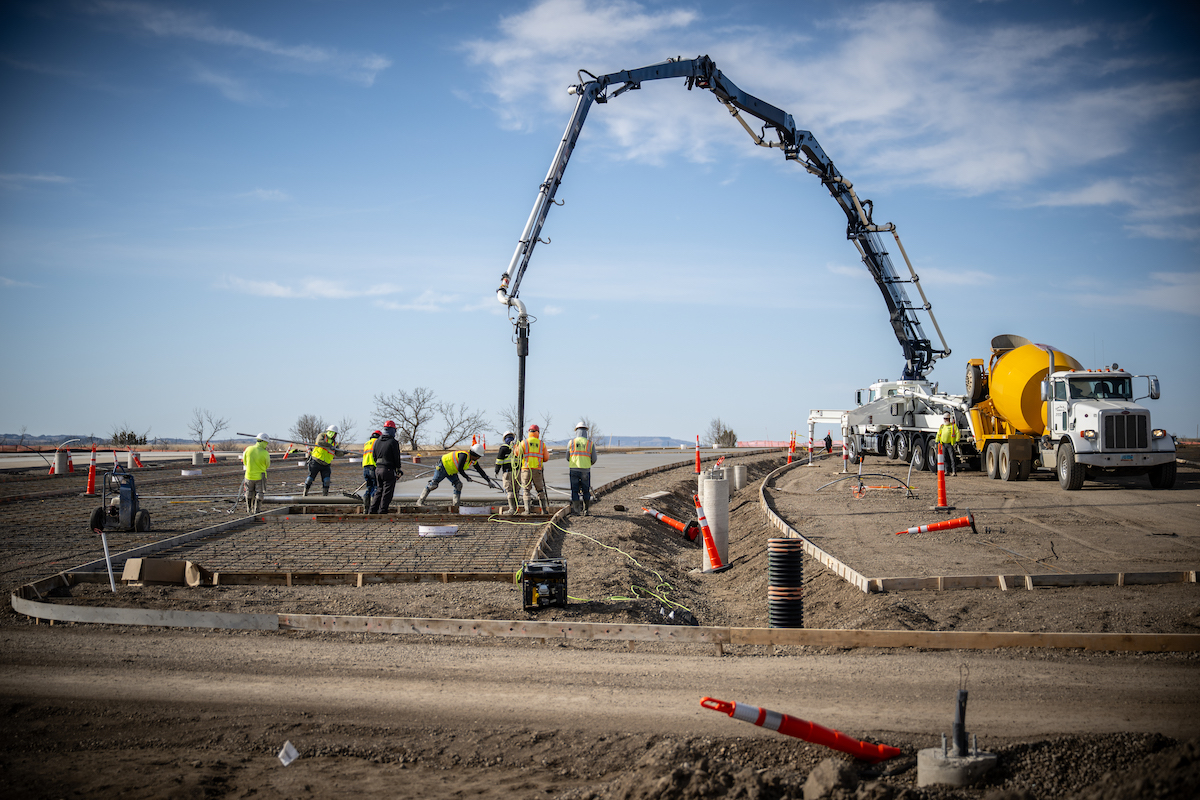To increase safety for all species, a unique, public-private partnership devised a way to construct a wildlife crossing and eliminate conflicts. In the works for over a decade, the $11 million Highway 17 Wildlife Undercrossing at Laurel Curve started construction in February 2022 and will finish later this year.
The Land Trust of Santa Cruz County acquired the necessary land, and the California Department of Transportation (Caltrans) designed the project in cooperation with other agencies and experts. Funding came through Measure D dollars from the Santa Cruz County Regional Transportation Commission, private fundraising by the Land Trust, and construction support from Caltrans. The process also included a new mechanism that allows Caltrans and the California Department of Fish and Wildlife to exchange mitigation credits.
In July 2021, Caltrans awarded the $5.4 million, low-bid construction contract to Graniterock of Watsonville, California. Graniterock maintained the two existing lanes of traffic by building the bridge at grade before digging out the undercrossing. That required three phases of roadway work and creative alternatives to traditional falsework and column pours.
Graniterock expects to complete work on the highway this fall, with the 10-foot-high, 70-foot-wide wildlife crossing finished by the end of 2022.

| Your local Gomaco dealer |
|---|
| Hayden-Murphy Equipment Co |
“There are only about 60 mountain lions in the Santa Cruz Mountains, and they’re genetically isolated from the Gabilan Range subpopulation, the other subpopulation in California, because of human highway infrastructure,” said Sarah Newkirk, the Land Trust’s Executive Director. “There are a lot of costs to inbreeding; we’re starting to see the accumulation of genetic anomalies.”
But movement outside of the Santa Cruz Mountains was blocked. “We received some very compelling science from our partners at the Santa Cruz Puma Project and Pathways for Wildlife, based on their tracking and roadkill data, that this site (Highway 17 at Laurel Curve) was clearly a place the animals wanted to use to get through the Santa Cruz Mountain Range and they were unable to do so,” Newkirk said.
Around the same time the Land Trust received that information, “A couple of key land acquisitions became available,” Newkirk said. “We certainly didn’t know how to organize all the agencies to get a wildlife crossing together – because nobody knew at that time – but the science was compelling. The opportunity was just too big to lose, so we took a leap and in 2014 bought that first parcel of land.”
Eventually, the Land Trust protected over 700 acres through acquisition and easements, partnering with Caltrans and other agencies to accomplish the project.
“We were very fortunate to be able to work with some really enlightened partners on the district level at Caltrans,” Newkirk said. “This project couldn’t have come about without Morgan Robertson (Caltrans Senior Environmental Scientist) and Nancy Siepel (Caltrans Biologist, now retired). It also couldn’t have happened if some of our public representatives – like Senator John Laird, Representative Mark Stone, and County Councilman Bruce McPherson – weren’t pushing the agencies to figure out how to make the mitigation credit scheme work so that Caltrans had an incentive to move forward with what for them was a fairly novel infrastructure project.”

| Your local Komatsu America Corp dealer |
|---|
| Road Machinery and Supplies Company |
Throughout design, Caltrans worked with the Land Trust and the Department of Fish and Wildlife. In addition, “All of it was informed by external scientists from the University of California Santa Cruz and Pathways for Wildlife,” Newkirk said.
For instance, because there’s no space for falsework, “We poured a temporary, 4-inch concrete slab underneath our bridge deck,” said Austin Haas, Graniterock’s Project Manager. “We have a bond breaker between the slab and the deck, so once we dig underneath the bridge, the slab will just peel off.”
The bridge includes two bents with 14 columns. The deepest pile goes down 50 feet from the roadway elevation into mostly rocky fill.
“Since right now the columns and the CIDH (cast-in-drilled-hole) piles are encased in dirt, instead of using traditional forms, we’re pouring them monolithically,” Haas said.
To complete the work, Graniterock shifted traffic in three phases – to one side of the right-of-way, then the other, and finally to the outside on northbound and southbound in order to complete bridge construction in the center.

| Your local Link Belt dealer |
|---|
| Hayden-Murphy Equipment Co |
Concrete barriers and K-rail protect the workers. “We make sure it’s pinned down,” Haas said. “There’s a 50-mph speed limit, but people usually go faster than that. One truck was going so fast it came up on the K-rail, but it held.”
“If an animal or person steps on it with 2 feet, they become a conductor and get a shock,” said Kevin McDermott, Project Engineer for Graniterock. “There will be a switch for humans to turn it off. It’ll be wide enough that a mountain lion can’t jump over it. The idea is if they get a shock, they’ll be pushed back and go through the tunnel.”
For any animal that decides to go through the fencing and electrified barrier, “There are wildlife escape ramps on the highway,” McDermott said. “They’re made of redwood with landscaping to entice animals to go through there if they somehow get onto the highway – but they’ll need to be pretty determined to get there.”
“There’s now a playbook that will help other highway crossings,” she said. “Connectivity is a hot issue for the state’s wildlife agencies and the 30x30 California initiative. Now that Caltrans and the Department of Fish and Wildlife are able to move mitigation credits, this project becomes scalable throughout California.”
In fact, the mitigation incentive framework pioneered in this project provided the model for SB790, signed into law in 2021 to support the implementation of wildlife crossings statewide.

| Your local Volvo Construction Equipment dealer |
|---|
| Nuss Truck & Equipment |
“That’s tremendously valuable for wildlife of all kinds trying to move freely – especially in the face of climate change where wildlife movement may shift and be different than it’s historically been,” Newkirk said.
Already, the Land Trust is working on a second wildlife crossing.
“We’re slated to close on a 2,600-acre property that’s located at the exact choke point on Highway 101 (near Los Angeles) where the mountain lions try to get across into the Gabilan Range,” Newkirk said. “Between this project at Highway 17 and the project on Highway 101, we expect to increase the available range for the mountain lions tremendously and really alleviate the genetic pressure for the local population.”
The Land Trust is working with Caltrans on next steps for the Highway 101 wildlife crossing.
“We’re optimistic that the creation of that crossing will move quite a bit faster because now we know how to do it,” Newkirk said.
- Land Trust of Santa Cruz County – Sarah Newkirk, Executive Director; Dan Medeiros, Former Director of Land Protection
- Caltrans – Farshad Keshavarzi, Project Manager
- Graniterock – Kevin Jones, Area Manager; Austin Haas, Project Manager; Kevin McDermott, Project Engineer; Ricky Smith, Superintendent; Cory Kelly, Dirt Forming Foreman; Mark Hurley, Structures Foreman

| Your local Trimble Construction Division dealer |
|---|
| SITECH Northwest |
| SITECH Dakotas c/o Butler Machinery |
Photos courtesy of Robert Ellenwood, Graniterock




































































